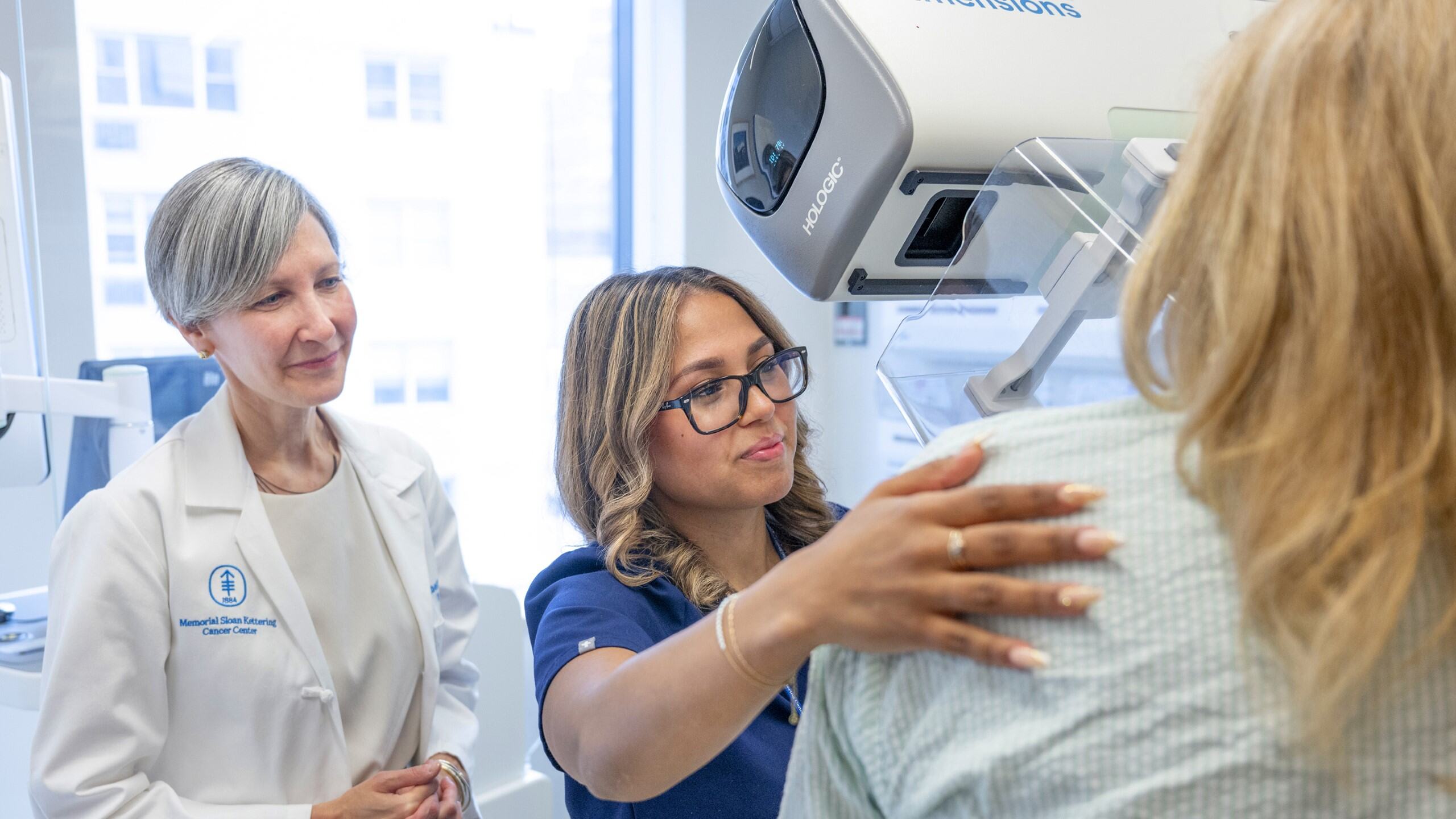Mammograms & Other Types of Breast Exams
Overview
Most breast cancers happen in people who were assigned female at birth. But people of all genders can get breast cancer, including a transgender man or a nonbinary person. People assigned male at birth also can get breast cancer.
Many women have a clinical breast exam each year as part of routine check-ups. Your healthcare provider will examine your breasts and the areas around them. They’re looking for anything abnormal (not normal), such as lumps or changes in texture.
These exams are often enough for most women, up until age 40. Learn more about breast cancer screening.
If there are changes to your breast, your care team often will recommend exams to learn more. The most common breast exams are mammograms, ultrasounds, MRIs, and physical exams.
Which type of breast exam is best for you depends on a few things. They include your age, risk factors, and your personal preferences. This page is a good place to learn more.
Ask your healthcare provider if you’re at average, intermediate, or high risk for breast cancer. Your risk level shows the type of screening and screening schedule that’s best for you. Tell them right away if you notice any signs or symptoms, such as lumps, swelling, redness, or nipple discharge.
Mammogram
A mammogram, also called mammography, uses low-dose X-rays to take pictures of your breast tissue. We use these images to check for signs of breast cancer.
During a mammogram, you stand in front of the X-ray machine. Your breast is placed between two plastic plates that flatten the breast for the picture.
At MSK, anyone who needs a mammogram will get tomosynthesis (toh-moh-SIN-thah-sis), also called 3D mammography. This technology helps us see breast tissue and tumors more clearly. It’s helpful for people who have dense breasts. The pictures it takes are so detailed that most people will not need to come back for more images.
If something does not look right, your healthcare provider will talk with you about tests to learn more. They can include ultrasound, an MRI, or a biopsy. Learn more about breast cancer diagnosis.
At MSK, we offer breast cancer screening services and programs for people at all levels of risk. Call to schedule a mammogram.
Breast tomosynthesis (3D mammogram)
Breast tomosynthesis (toh-moh-SIN-thah-sis) is also called 3D mammography. This kind of mammogram takes images of the breast from many angles. Together, the pictures make a 3D image of breast tissue.
This method often is helpful if you have dense breasts.
Learn about how a 3D mammogram works.
Contrast-enhanced mammography
MSK also offers contrast-enhanced mammography. This type of mammography uses iodinated contrast to show the blood flow in your breast. Tumors usually have more blood flow than normal tissue and absorb more dye than healthy tissue. Tumors show clearly on the images.
Contrast-enhanced mammography can show breast tumors just like a breast MRI can. They’re a good option for people who cannot have an MRI, or who have dense breasts. They’re also an option for people at higher risk of getting breast cancer.
Our RISE Program is for people at high risk for breast cancer. We'll make a plan to watch you for early signs of breast cancer. You’ll get regular breast exams and imaging tests. This helps us find changes in your breasts early, often before you have symptoms.
Breast MRI
Breast magnetic resonance imaging (MRI) scans make detailed 3D images of your breast. These images show us the type, size, and location of tumors.
An MRI scan is done using radio waves, a powerful magnet, and a computer. The machine that holds the magnet and makes the radio waves is called an MRI scanner. It’s big and has a hole in the middle. During the MRI, you lie on a table that slides into the scanner.
The scanner takes a series of pictures that each show a thin slice of your breast. The computer puts the pictures together to make a 3D image.
During an MRI test, you may have fluids injected that can help make better images of the inside of the breast.
Research shows that having regular mammograms along with a breast MRI may be better for people at high risk for breast cancer.
Common questions
It's common to have lumps in breast tissue. There may be no need to worry. Some people just have lumpier breast tissue. It’s important to know what's normal for your body so you can spot when something does not feel right.
Tell your healthcare provider right away if you notice any changes in the texture of your breast. That includes lumps, dimpling, redness, or swelling.
Ask your healthcare provider about your risk for getting breast cancer, called your lifetime risk. Your lifetime risk tells us if you’re at average, intermediate, or high risk. Based on your risk, MSK has different guidelines for the type and timing of your screening.
We have information about MSK’s screening guidelines for people at average, intermediate, and high risk for breast cancer.
MSK's breast cancer screening guidelines recommend you get a mammogram every year starting at age 40. If you’re at high risk for breast cancer, we recommend you start screening earlier.
MSK offers screening mammograms at these locations:
MSK offers second opinions for people who have a breast imaging diagnosis made by doctors outside of MSK. You may have:
- A test result that’s not normal, but you do not yet have a breast cancer diagnosis.
- Just learned you have breast cancer.
- Already started treatment for breast cancer.
If you would like to get an MSK second opinion about your imaging results, learn more about MSK’s Breast Imaging Second Opinion Review Program.

